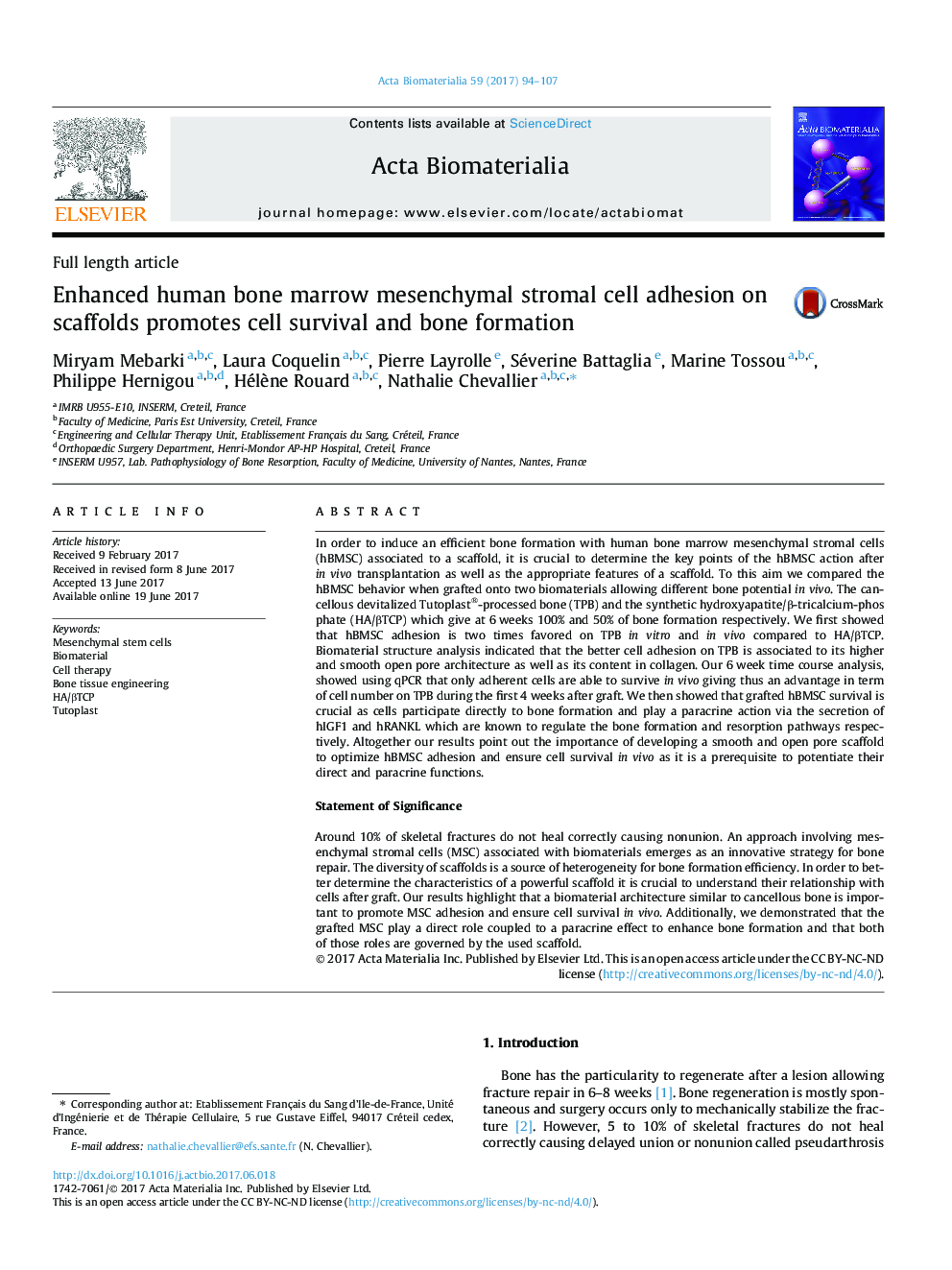| کد مقاله | کد نشریه | سال انتشار | مقاله انگلیسی | نسخه تمام متن |
|---|---|---|---|---|
| 6449046 | 1415927 | 2017 | 14 صفحه PDF | دانلود رایگان |
In order to induce an efficient bone formation with human bone marrow mesenchymal stromal cells (hBMSC) associated to a scaffold, it is crucial to determine the key points of the hBMSC action after in vivo transplantation as well as the appropriate features of a scaffold. To this aim we compared the hBMSC behavior when grafted onto two biomaterials allowing different bone potential in vivo. The cancellous devitalized Tutoplast®-processed bone (TPB) and the synthetic hydroxyapatite/β-tricalcium-phosphate (HA/βTCP) which give at 6 weeks 100% and 50% of bone formation respectively. We first showed that hBMSC adhesion is two times favored on TPB in vitro and in vivo compared to HA/βTCP. Biomaterial structure analysis indicated that the better cell adhesion on TPB is associated to its higher and smooth open pore architecture as well as its content in collagen. Our 6 week time course analysis, showed using qPCR that only adherent cells are able to survive in vivo giving thus an advantage in term of cell number on TPB during the first 4 weeks after graft. We then showed that grafted hBMSC survival is crucial as cells participate directly to bone formation and play a paracrine action via the secretion of hIGF1 and hRANKL which are known to regulate the bone formation and resorption pathways respectively. Altogether our results point out the importance of developing a smooth and open pore scaffold to optimize hBMSC adhesion and ensure cell survival in vivo as it is a prerequisite to potentiate their direct and paracrine functions.Statement of SignificanceAround 10% of skeletal fractures do not heal correctly causing nonunion. An approach involving mesenchymal stromal cells (MSC) associated with biomaterials emerges as an innovative strategy for bone repair. The diversity of scaffolds is a source of heterogeneity for bone formation efficiency. In order to better determine the characteristics of a powerful scaffold it is crucial to understand their relationship with cells after graft. Our results highlight that a biomaterial architecture similar to cancellous bone is important to promote MSC adhesion and ensure cell survival in vivo. Additionally, we demonstrated that the grafted MSC play a direct role coupled to a paracrine effect to enhance bone formation and that both of those roles are governed by the used scaffold.
163
Journal: Acta Biomaterialia - Volume 59, 1 September 2017, Pages 94-107
